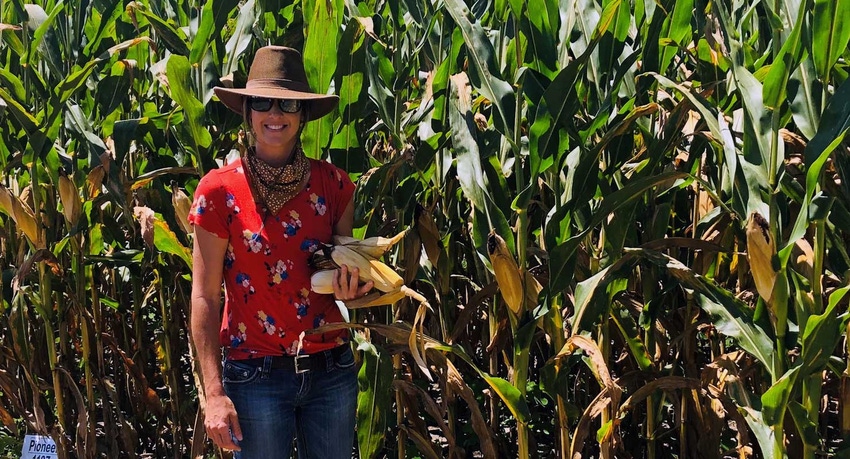January 26, 2022

Corn growers in the heart of Florida family farm country took a big personal risk this year to keep the Suwannee River a little cleaner.
They cut fertilizer use by hundreds of thousands of pounds so less would sink past their plants and into the aquifer and river we rely on for drinking water. But it could also mean a smaller harvest and a smaller payday.
Why take the risk? Because someone they trusted got them to talk frankly about just how much fertilizer they really needed to use. She also warned them of a future in which they may be called upon to use less.
De Broughton is a University of Florida Institute of Food and Agricultural Sciences Extension agent. That gives her credibility with growers. She has earned their trust through a lifetime of service to Suwannee Valley agriculture.
She grew up in a local farm family and has harvested corn herself. She taught ag in the local high school. These days she’s on their farms regularly, sometimes more than once a week. She spends her days helping them address challenges, and fertilizer use is one of the biggest.
So when Broughton called for an informal corn growers’ summit at the North Florida Research and Education Center—Suwannee Valley to talk about fertilizer, they showed up. And they listened.
Broughton was honest. She warned that regulations could be coming based on decades-old UF/IFAS science. The Legislature has already enacted a law that dispatches state inspectors to farms to check on fertilizer use.
Broughton said she needed to get cracking on updating the science so if regulations come, they’ll be informed by facts, not speculation. She asked for and got their input to design experiments that mimic conditions on their farms.
Then the growers spoke. And they did something they never do—shared with their competitors what they were doing on their farms, the equivalent of revealing trade secrets. By sharing, they could see that some farmers were getting the same results with less fertilizer.
They emerged with a pact to use about 30 pounds per acre less. Because the growers in the room accounted for about 10,000 acres of corn, that’s a whole lot of fertilizer.
Broughton enlisted ag Extension agent Jay Capasso from neighboring Columbia County to run the research farm experiment. Capasso also happens to be pursuing his Ph.D. He trusts Broughton, too, and when it came time to identify a topic for his dissertation, Broughton told him about the corn challenge.
So Broughton and Capasso are experimenting on corn on the research farm in Live Oak. Meanwhile, the growers reduced their fertilizer use, checked sensors in the soil to monitor any excess seeping into the aquifer, and kept careful records.
The preliminary results are promising. Growers report that yield didn’t appear to go down. They saw less fertilizer getting down below the roots. They’ll continue the reduced use.
For years, there’s been a great deal of finger pointing at farmers as polluters. But farmers see themselves as Florida’s original environmentalists, caring for the land over a century and a half during which 20 million people moved into the state. Millions of them fertilize, too—lawns. They flush toilets. All the additional roads, driveways and parking lots funnel pollutants into waterways.
Farmers themselves rely on clean water for their livelihoods. They hope to pass their farms to their children one day, but those children will need clean and plentiful water to keep farming.
Suwannee Valley accounts for nearly 1 in 5 Florida farms. Its farming community celebrated its environmental ethic in November with its 20th annual Suwannee CARES (County Alliance for Responsible Environmental Stewardship) event. It highlighted more than 20 farmers who practice cover cropping, reduced irrigation, low-till planting and more.
The CARES event brings together growers, UF/IFAS, the Florida Farm Bureau, the Florida Department of Agriculture and Consumer Services, the Florida Department of Environmental Protection, and the Suwannee River Water Management District to share and incentivize sustainable agriculture.
That means farming that’s still profitable for those corn growers’ kids, updated science from trusted messengers like Broughton, and the river that inspired the state song flowing clean and clear to the Gulf.
J. Scott Angle is the University of Florida’s Vice President for Agriculture and Natural Resources and leader of the UF Institute of Food and Agricultural Sciences (UF/IFAS).
You May Also Like




